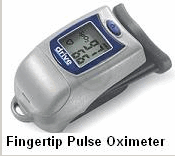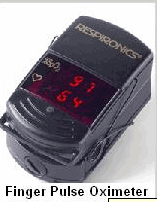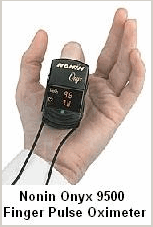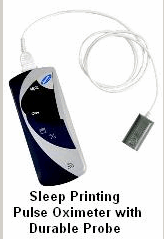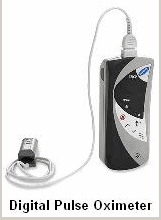Blog Roll: (Contributors)
» Hulet Smith, OT
» Megan Smith, PT
» Mike Price, OT
Topics:
Adaptive Devices
Adult Tricycles
Air Purifier
Allergy
Alternative Communication Devices
Alzheimer's Dementia Products
Aquatic Products
Arthritis Relief Products
Autism
Back Relief
Ball Pit/Pool
Bariatric
Bath Benches
Bathtub Lift
Bed Rails
Bedsores / Decubitus
Bidet
Body Solid Exercise Products
Breast Feeding Products
Bushel Trucks
Cancer
Catheters
CEU
Changing Bench
Child Car Seats
Child Care Products
Christmas Gifts
Clinic/Medical Equipment
Clinical Furniture
Cold and Flu
Communication Devices
Compression Garments
Computer Products
CPAP
Crutches
Daily Assistance Products
Daylight Lamps
Dental Care
Diabetes
Doctor's Office
Dysphagia
Electrodes
Electrolarynx
Emergency Preparedness
Ergonomic Equipment
Exam Tables
Exercise Products
Eyecare
Family Tricycles
First Aid Kits
Floor Scales
Fluidotherapy
Foot Drop
Foul Weather Gear
Furniture
Gait Trainers
General Articles
General Posts
Glassless Mirrors
Hand Sanitizer
Head Protection Helmets
Hearing Impaired
Heart Health
Heating Pad
Hip Fractures
Home Assistance Products
Home/Office Assistance
Hospital Beds
Hoyer Lifts
Hyperbaric chamber
Hyperthermia/Hypothermia
Ice/Hydration Carts
Impotence Products
Incontinence Products
Infection Control Gowns
Inspirational Stories
Lift Chairs
Light Therapy
Low Vision Products
Massage Tables & Chairs
Massage Units
Maternity
Medical Facility Products
Medical Scales
Multi-Sensory Environment
Natural Healing
Nebulizers
Non-Hospital Bedding
Nutritional Supplements
Office Furniture
One-Handed Products
Operating Room Devices
Ostomy Products
Oxygen Compressors
Oxygen Concentrator
Oxygen/Nebulizer Masks
Pain Relief
Paraffin Unit
Patient Lift
Patient Lifts
Patient Restraints
Patient Transfer Systems
Pediatric Bath Chairs
Pediatric Furniture
Pediatric Learning
Pediatric Recreation
Personal Listening Devices
Personal Warming Products
Physical Therapy
Pill Organizers
Pillows
Playground Equipment
Pool Lifts
Press Releases
Procedure Chairs
Pulse Oximeter
Reading Assistance
Reference Materials
Rehab Equipment
Rehabmart News
Rehabmart Newsletter
Respiratory Health
Rollators
Saunas
Scooters
Seniors
Shower Chairs
Shower Commode Chairs
Shower Gurney
Showers Chairs
Side Access Bathtubs
Skin Tear
Special Needs Dinnerware
Special Needs Seating
Special Report Articles
Splints
Sport Injuries
Standers
Staying Home
Stethoscopes
Stimulus Reward Toys
Stress Relief
Stroke
Strollers
Summertime Products and Summertime Fun
Talking Products
Therapy Balls
TheraTogs
Thermometers
Traction Devices & Tables
Treatment Tables
Ultrasound
Vibroacoustic Therapy
Vision Products
Walk-In Bathtub
Walking Aids
Walking Boot
Weighted Wearables
Wheelchair Accessories
Wheelchair Cushions
Wheelchair Lifts
Wheelchair Ramps
Wheelchair Transfer Systems
Wheelchairs
Women's Health
Work Hardening Products
Wound Care
Pulse Oximeter
“Rehabmart offers many different types of pulse oximeters at discount prices. Visit the site to see great products!”
A pulse oximeter by any other name is, well, a finger pulse oximeter. Finger pulse oximeters are used primarily for spot-checking blood oxygen saturation. Their small size makes the finger oximeter very appealing to individuals looking for an oximeter for home use, they are also appropriate for professional medical facilities. Although they are smaller, most finger models are just as accurate as larger oximeter styles. If you do choose to purchase an oximeter for home use, remember that there are limitations to the oximeter's ability to read oxygen saturation and that even a quality reading is just one of many variables used to determine if an individual is receiving enough oxygen. When reading medical measurements, always consult a medical professional qualified to interpret the results if there are any concerns.
A finger pulse oximeter is a noninvasive medical device that measures the oxygen saturation in a person's blood and their pulse rates, which is a monitored signal that bounces in time with the heart beat, because the arterial blood vessels expand and contract with each heartbeat. What is cool about finger pulse oximeters is they are very convenient; and useful as they can be used with no trouble, anytime, anywhere -what we call portable pulse oximeters.
Basically, this is how finger pulse oximeters work. Clipped to a finger of an individual, a photo-diode is faced with a pair of small light-emitting diodes (LED) which have two different wavelengths-one LED is an infrared ( with a wavelength of 905, 910, or 940 nm) and the other is red ( with a wavelength of 660 nm). Absorption at the said wavelengths differs a lot between oxygenated and deoxygenated blood, thus, making it possible to calculate the ratio between the two.
The primary utilities of the finger pulse oximeter are to determine the relative severity of cardiopulmonary or airway disease, monitor the effectiveness of therapy, and monitor for deterioration in condition. An abnormal hemoglobin saturation is more useful to guide the physician in clinical decision making.
So, shall we let our fingers do the walking and see some examples of Finger Pulse Oximeters.
The first example is the Fingertip Pulse Oximeter, which boasts a compact and light design. The total weight is 50 grams, including batteries. It uses low power consumption, and comes with an automatic power-off design and a low voltage indicator.
The Finger Pulse Oximeter, displays numerical values for functional arterial hemoglobin oxygen saturation (%SpO2) in percentage and pulse rate in beats per minute on light emitting diode (LED) digital displays. With each detected pulse, the Perfusion Display blinks. Patient perfusion signals are graded as good, marginal or inadequate and are indicated as such by the perfusion indicator changing color from green to yellow or red respectively. This sophisticated, yet simple technique provides a pulse-by-pulse visual indication of waveform signal quality, without requiring the user to perform complex signal analysis during critical patient care situations.
Another great choice from Rehabmart would be the Nonin Onyx 9500 Finger Pulse Oximeter. This oximeter is a simple to use and has an automatic on/off operation. The two AAA batteries will power up to 1600 spot checks or 18 hours of continuous use. Blood Oxygen Saturation is accurate to +/- two digits, Pulse Rate accurate to +/- one digit.
Two more outstanding examples of the technology of finger pulse oximeters are the Sleep Printing Pulse Oximeter and the Digital Pulse Oximeter. The Sleep Printing Pulse Oximeter with Durable Probe, by Invacare® has been specifically designed to address the growing need for a device that can easily be used for conducting overnight screening for qualifying or re-qualifying patients who may require supplemental oxygen use. This oximeter has full computer download capability with 12 hour, down-loadable Trend memory continuous data. You can also purchase the exclusive Windows based software option.

